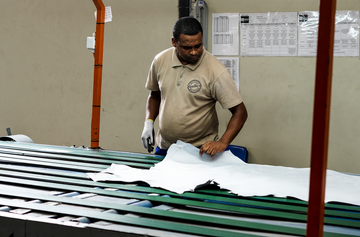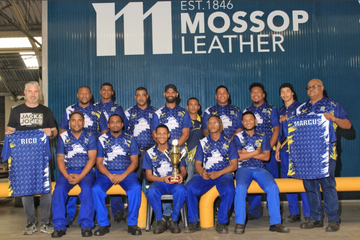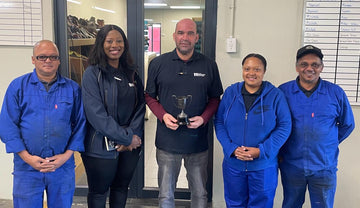Chrome Tanning - Dispelling Myths and Embracing Modern Leathercraft
by Team MDS on Mar 25, 2024

Leather manufacturing. Enviromental choices. Chrome tanning has often been overshadowed by its vegetable tanning counterpart, touted for its perceived environmental and quality advantages. However, recent insights and advancements in chrome tanning are challenging these long-held beliefs, positioning chrome tanning as a viable and efficient alternative in the leather industry.
A Brief Comparison
Vegetable tanning, a traditional method dating back centuries, relies on plant-derived tannins to tan leather. This process is known for its lengthy duration, requiring weeks or even months to complete. In contrast, chrome tanning, developed in the 19th century, utilizes chromium 3 sulfites, enabling a significantly faster tanning process, typically completed within a day or two. Despite its historical prevalence, comprising over 90% of global leather production, chrome tanning has often been criticized for its environmental impact and perceived lower quality compared to vegetable tanning.

Dispelling Environmental Concerns
One of the primary criticisms of chrome tanning has been its environmental impact, particularly in terms of chromium 6 production. Historically, this byproduct posed risks to both the environment and tannery workers. However, modern advancements in technology and stringent environmental regulations have significantly mitigated these concerns. Today, chrome tanning facilities adhere to strict guidelines, minimizing their environmental footprint and ensuring the safety of their workers. Chrome 3 occurs naturally in our bodies and in the environment and does not pose any risks or dangers to plants or animals… including us humans.
Redefining Quality and Craftsmanship
While vegetable tanning has been synonymous with superior quality and artisanal craftsmanship, this perception is not solely attributed to the tanning method itself. The skill and labour required for vegetable tanning inherently contribute to its higher cost and perceived quality. However, this does not imply that chrome-tanned leather is inferior. In fact, many renowned leather products, such as crazy horses, are chrome-tanned, challenging the notion that chrome tanning compromises quality.
Embracing Innovation
The evolution of chrome tanning highlights the industry's commitment to innovation and sustainability. By dispelling myths and embracing advancements, the leather industry is paving the way for a more sustainable and efficient future. Chrome tanning, once maligned for its environmental impact, is now recognized as a key player in modern leathercraft, offering speed, efficiency, and environmental responsibility.
In conclusion, the narrative surrounding chrome tanning is changing, with a growing recognition of its benefits and contributions to the leather industry. As technology continues to advance and environmental standards improve, chrome tanning is poised to redefine the industry's perception of quality and sustainability, ushering in a new era of modern leathercraft.




